Here on the eve of the domestic release of Marvel Studio’s biggest triumph to date, Captain America: Civil War, a producer most people have never heard of before is stepping forward to reclaim the credit history has apparently robbed from him. It begs the question of whether or not it truly matters anymore who created Marvel Studios, but for David Maisel it sure as heck matters. If we believe he was the brains behind the dealmaking which gave us The Avengers maybe we’d be more inclined to check out his new flick The Angry Birds Movie later this month.
But, first, a brief overview:
- Stan Lee spent decades desperately trying to convince Hollywood to make Marvel movies and TV shows, but what did get made was terrible and the film rights were left scattered in the wind.
- Avi Arad took over in the early 90s, and set the ball in motion for some quality movies (e.g., Blade, X-Men, Spider-Man). However, he eventually went away, leaving to exclusively oversee the Spider-Man movies at Sony (although he’s since been pushed aside, at least as far as the main Spider-Man movies are concerned).
- In the mid-2000s, Marvel Studios made one of the boldest moves in Hollywood history, and became an independent film studio stuck with drumming up interest in big budget movies about its Junior Varsity squad of superheroes who they hoped to eventually team-up together in an unprecedented movie event. If it didn’t work, the company would forfeit the film rights to Iron Man, Captain America, Ant-Man, Black Panther, Hawkeye, and, really, the Avengers altogether. That clearly worked out for them
Who’s actually responsible for the Marvel Studios we know and love? Um, let’s just say Kevin Feige and call it good. In Feige we trust.
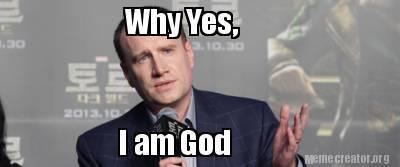 Not so fast. We’re missing a crucial step between Avi Arad and Kevin Feige, and that’s where David Maisel comes in.
Not so fast. We’re missing a crucial step between Avi Arad and Kevin Feige, and that’s where David Maisel comes in.
The year was 2004…
Wait. Hold on. Are you someone who already knows your Marvel Studios history? If so, then jump down further in the article. If not, a history lesson is in order before we get to Maisel:
Marvel Studios is actually lot older than most people realize. It began its life as Marvel Films in 1993 after Marvel made a deal granting toy manufacturer Toy Biz the exclusive, master license for all its characters, royalty-fee and in perpetuity. Toy Biz’ co-owner Avi Arad became the President and CEO of the newly-created Marvel Films. His goal: Get another animated series off the ground (which he did with Spider-Man), and stop Marvel from making so many shitty movies. How?: Gain more control over the scripts, and convince more reputable studios to make the films. That last part was supposed to be Stan Lee’s job.
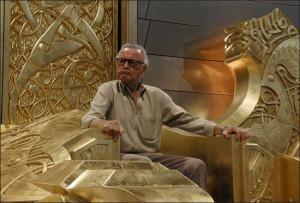 So when Marvel agreed to send Arad to Los Angeles he was only ever supposed to assist Lee as Marvel’s Hollywood ambassador. Instead, as Lee told Fortune, “Avi insinuated himself into the job.” Still, Avi fought many of the same battles Lee had, and butted heads with the Marvel higher-ups who preferred to simply license the characters and count the easy money, especially since the popularity of a hit movie would theoretically trigger a surge in comic book and toy sales.
So when Marvel agreed to send Arad to Los Angeles he was only ever supposed to assist Lee as Marvel’s Hollywood ambassador. Instead, as Lee told Fortune, “Avi insinuated himself into the job.” Still, Avi fought many of the same battles Lee had, and butted heads with the Marvel higher-ups who preferred to simply license the characters and count the easy money, especially since the popularity of a hit movie would theoretically trigger a surge in comic book and toy sales.
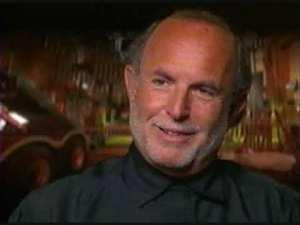
Avi Arad
When Marvel declared bankruptcy in 1996, Marvel Films ultimately became Marvel Studios, and Arad was finally authorized to stop simply licensing characters. Instead, he could now assemble pre-production packages for each potential movie so that when a studio took over it was picking up a Marvel-approved script and attached talent, not just a mere film license.
However, the bankruptcy dragged on longer than expected. A corporate raider who simply wanted to fix Marvel and flip it was given control of the company while the banks searched for a new permanent owner. This arrangement threatened Toy Biz’ contract for the toy rights as well as Arad’s vision for Marvel Studios. At a meeting with the banks, Arad reportedly made the following impassioned argument:
“We live in one of the most creative countries in the world. But look around you and see how few characters have been introduced and survived. You have Star Wars, maybe Star Trek, and you’ll be hard-pressed to name any other characters that survived that long. I feel certain that Spider-Man alone is worth a billion dollars. But now, at this crazy hour, at this juncture, you’re going to take $380m for the whole thing? One thing is worth a billion! We have the X-Men. We have the Fantastic Four. They can call be movies!”
Not too long after that, Arad was forced out of Marvel Studios as part of the ongoing power struggles, but he wouldn’t be gone long. In early 1998, Toy Biz merged with Marvel thus ending the bankruptcy. Toy Biz’ Ike Perlmutter now called the shots at Marvel, and Arad was back in charge of Marvel Studios, just in time for a project he’d overseen back during the Marvel Films days to make it to the screen:
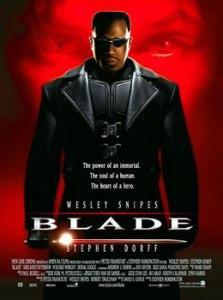 1998’s Blade kicked off a run of Marvel movies (X-Men and Spider-Man) turning into progressively bigger hits for different studios. However, Marvel saw precious little in return. For example:
1998’s Blade kicked off a run of Marvel movies (X-Men and Spider-Man) turning into progressively bigger hits for different studios. However, Marvel saw precious little in return. For example:
Spider-Man 1-2
Sony
$1.6 billion
$62m
X-Men 1-3
Fox
$2 billion
$26m
Fantastic Four (2005) Fox $624m $13m
Blade (1998) New Line $131m $25,000
For some, that was acceptable. As Fortune pointed out, “Marvel’s box-office take wasn’t much when Spider-Man opened in 2002, but the company sold so much merchandise that net sales rose from $181 million in 2001 to $299 million in 2002. Profits soared from $1 million to $80 million over the same period. Soon after Spider-Man 2 opened in 2004, though, the stock dropped more than a third. Wall Street thought Marvel was all Spider-Man.”
Even with X-Men and Fantastic Four set up at Fox and The Hulk at Universal, Marvel was going to have to live and die on Spider-Man, leaving them overly dependent on whatever Sony wanted to do with its movies. Something had to change.
 So, as I was saying earlier…
So, as I was saying earlier…
The year was 2004. Spider-Man 2 was in theaters, and Arad and Perlmutter met David Maisel, a Harvard business graduate with prior experience with CAA and Disney. Maisel had an ambitious new idea “to fund movies with borrowed money backed by superhero movie rights. Perlmutter liked the idea and hired Maisel as COO of Marvel Studios.”
By early 2005, Maisel and Arad secured $525m in revolving funding from Merrill Lynch to make ten movies with budgets no lower than $45m and no higher than $165m. They put up the movie rights to the 10 characters as collateral, and negotiated a distribution agreement with Paramount Pictures. Arad wouldn’t be around to see the deal to fruition, as Fortune explained:
[Arad] had played a key role in setting up the new studio, personally calling Brad Grey, CEO of Paramount Pictures, to arrange distribution. He helped sell the idea to Wall Street. Michael Blum, head of global structured finance for Merrill Lynch, who worked on the Marvel deal, says, “Nobody can pitch those characters like Avi can.” But Arad feared Maisel wanted to produce too many movies too fast. He also worried that Marvel was putting too many weak characters into the lineup. Arad and Maisel were soon fighting. Maisel, though, had won the backing of Perlmutter. “Ike was a supporter – not just of the deal, but of my role,” says Maisel.
Arad quit and cashed out his stock in 2006, continuing to serve as a producer on the Marvel movies he’d help set up, like Ghost Rider, while also starting his own production studio. Maisel replaced him as CEO, and Kevin Feige was promoted to President of Production.
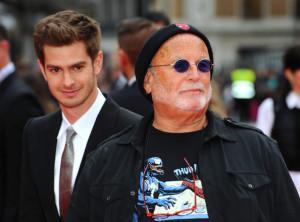
Avi Arad in front of Andrew Garfield at The Amazing Spider-Man red carpet premiere
Yet when you watch I Am Iron Man: 7-Part “Making Of” Documentary on the special edition of the Iron Man DVD the only producers interviewed and identified on-screen are Peter Billingsley (exec. producer), Kevin Feige (producer), Victoria Alonso (visual effects producer) and none other than Avi Arad (exec. producer). David Maisel is nowhere to be found, even though the documentary covers every stage of the production, so much so that one of the odds joys is watching Jon Favreau’s gradually shrinking waistline (he lost 75 pounds from pre-production to premiere).
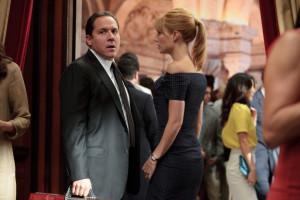 Where’s Maisel? The way he tells it, everyone seems to conveniently forget the role he played in building the Marvel Studios empire. It’s easier to focus on Avi Arad and Kevin Feige, both of whom are passionate promoters of the involved characters. Maisel is more of a money man, the type of figure who might be most directly responsible for a film getting made but is not generally credited with actually contributing to the quality of the movie. When he was interviewed by Fortune in 2007, here’s how they described him:
Where’s Maisel? The way he tells it, everyone seems to conveniently forget the role he played in building the Marvel Studios empire. It’s easier to focus on Avi Arad and Kevin Feige, both of whom are passionate promoters of the involved characters. Maisel is more of a money man, the type of figure who might be most directly responsible for a film getting made but is not generally credited with actually contributing to the quality of the movie. When he was interviewed by Fortune in 2007, here’s how they described him:
In the comics, no one but Thor can lift the magic mallet. The new studio head doesn’t come off like the kind of guy who would know this. Maisel has none of the playfulness you’d expect from someone whose job is to make movies about guys in tights. Instead he talks endlessly about Marvel’s business plans. Think of him as Captain Finance.
He left Marvel after it was sold to Disney, but the way he tells it (in a new THR profile) that Disney deal never would have happened without him:
- When Maisel was hired as COO, “Feige was a relatively junior executive giving script notes to studios.”
- At minimum, Maisel’s goal was to negotiate better profit-spit with the studios making Marvel movies, but he’d long since pondered the potential financial rewards if Marvel could make its own movies and set up its own cinematic universe, citing George Lucas’ Star Wars strategy as a key inspiration, “If we could do movies similar to the box-office average of the [Marvel films] that had been released or even a haircut to those, significantly, Marvel could be worth in the billions.”
- Before he was hired, Marvel was posed to license Captain America to Warner Bros. and Thor to Sony. He killed those deals.
- He negotiated the deal with Lionsgate to produce several direct-to-video Marvel animated movies as a proof-of-concept for what he aimed to do with live-action. Lionsgate financed the films, but shared the profits 50/50.
- After negotiating the Merrill Lynch deal, he went to Universal to serve as the distribution partner, but they dragged their feet thus opening the door for Paramount.
- It all almost fell apart in the spring of 2005 when Merrill Lynch demanded that Marvel kick in a third of the production budgets, which was a dealbreaker as Perlmutter’s order was that they were not to spend a dime on the movies. So, Maisel sold pre-distribution rights in five foreign territories not covered by Paramount, and used the money to provide the necessary funding.
- The Marvel board had no idea what they had on their hands. Of Iron Man, one board member told Maisel, “Don’t worry. We’ll be very happy if this breaks even and we can sell more toys.”
- Maisel claims he is the one who re-negotiated the deal with Universal granting them the rights to any future Hulk movies but only if the big green guy was the starring character. Sneaky, sneaky, since Maisel knew the plan was to feature him as part of the ensemble in The Avengers
- Lastly, Maisel claims he is the one who initiated the Disney-Marvel merger, leveraging his past relationship with Bog Iger (the two met when Maisel worked at Disney) and arranging a meeting with Ike Perlmutter.
Of all this, Marvel and Kevin Feige declined to comment, and Arad would only say, “Success has many parents. I respect David’s interesting mind.”
It’s impossible to know for sure who actually did what along the way. In a very real sense, if not for Avi Arad Marvel Studios would have died in its infancy back in the late 90s since the corporate raider attempting to take over Marvel had no interest in ever making movies. However, if not for Maisel they may never have been able to secure the proper financial structure to get off the ground as an independent unit.
Maisel cashed out after the Disney deal, and Kevin Feige is now singularly associated with the company. It doesn’t so much matter anymore who put Marvel Studios together, but it’s at least interesting to realize that there’s likely much we didn’t or still don’t know about its formative years.
Sources: THR, Sean Howe’s Marvel Comics: The Untold Story, Fortune

